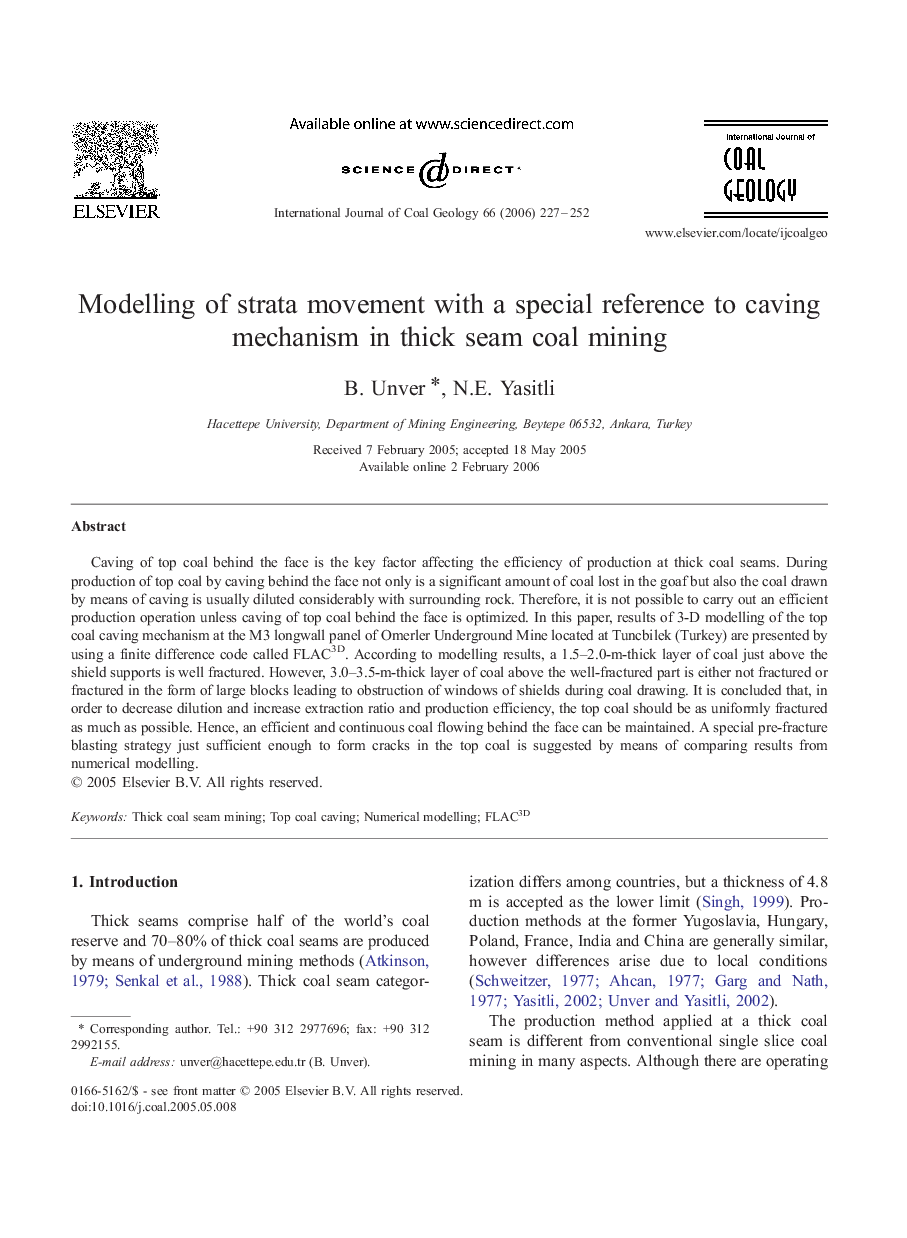| Article ID | Journal | Published Year | Pages | File Type |
|---|---|---|---|---|
| 1754395 | International Journal of Coal Geology | 2006 | 26 Pages |
Abstract
Caving of top coal behind the face is the key factor affecting the efficiency of production at thick coal seams. During production of top coal by caving behind the face not only is a significant amount of coal lost in the goaf but also the coal drawn by means of caving is usually diluted considerably with surrounding rock. Therefore, it is not possible to carry out an efficient production operation unless caving of top coal behind the face is optimized. In this paper, results of 3-D modelling of the top coal caving mechanism at the M3 longwall panel of Omerler Underground Mine located at Tuncbilek (Turkey) are presented by using a finite difference code called FLAC3D. According to modelling results, a 1.5-2.0-m-thick layer of coal just above the shield supports is well fractured. However, 3.0-3.5-m-thick layer of coal above the well-fractured part is either not fractured or fractured in the form of large blocks leading to obstruction of windows of shields during coal drawing. It is concluded that, in order to decrease dilution and increase extraction ratio and production efficiency, the top coal should be as uniformly fractured as much as possible. Hence, an efficient and continuous coal flowing behind the face can be maintained. A special pre-fracture blasting strategy just sufficient enough to form cracks in the top coal is suggested by means of comparing results from numerical modelling.
Related Topics
Physical Sciences and Engineering
Earth and Planetary Sciences
Economic Geology
Authors
B. Unver, N.E. Yasitli,
